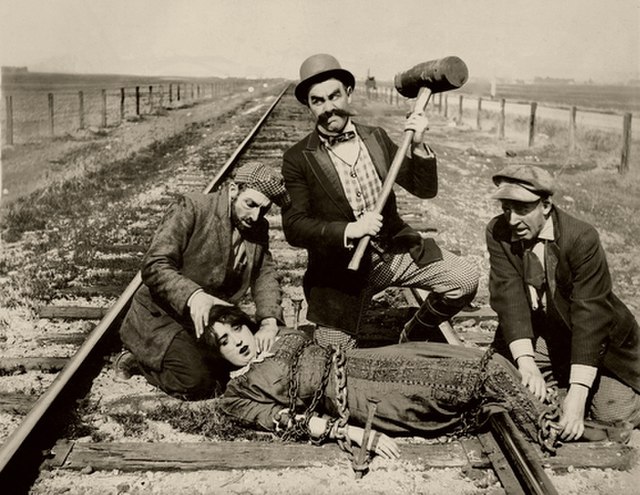Al St. John was an early American motion-picture comedian. He was a nephew of silent film star Roscoe "Fatty" Arbuckle, with whom he often performed on screen. St. John was employed by Mack Sennett and also worked with many other leading players such as Charlie Chaplin, Buster Keaton and Mabel Normand. His film career successfully transitioned from the silent era into sound, and by the late 1930s and 1940s he was working predominantly in Westerns, often portraying the scruffy comedy-relief character "Fuzzy Q. Jones". Among his notable performances in that role are in the "Billy the Kid" series of films released by the Producers Releasing Corporation from 1940 to 1946 and in that company's "Lone Rider" series from 1941 to 1943.
Who's Who on the Screen, 1920
Barney Oldfield's A Race for a Life (1913) with left to right: Hank Mann, Ford Sterling, Al St. John and in the foreground Mabel Normand
Left: Ford Sterling as Keystone Cops Police chief [seated}; 4th from right: Al St John in In the Clutches of the Gang (1914)
St. John (right) with Buster Keaton and Roscoe Arbuckle in Out West (1918)
Roscoe Conkling "Fatty" Arbuckle was an American silent film actor, director, and screenwriter. He started at the Selig Polyscope Company and eventually moved to Keystone Studios, where he worked with Mabel Normand and Harold Lloyd as well as with his nephew, Al St. John. He also mentored Charlie Chaplin, Monty Banks and Bob Hope, and brought vaudeville star Buster Keaton into the movie business. Arbuckle was one of the most popular silent stars of the 1910s and one of the highest-paid actors in Hollywood, signing a contract in 1920 with Paramount Pictures for $1,000,000 a year.
Arbuckle c. 1916
Fatty Arbuckle ad from The Film Daily, 1932
Arbuckle with his and Minta Durfee's dog Luke, c. 1919
Frequent co-star Mabel Normand








